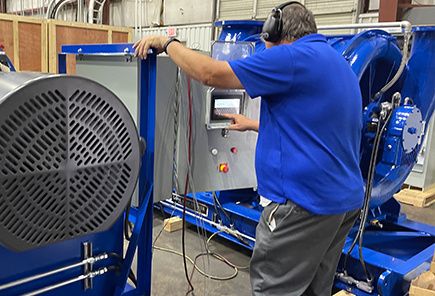
Programmable Logic Controllers (PLCs) are an essential component in the field of electrical engineering, providing a means to automate processes and control machinery. However, transitioning from theory to practice in implementing PLC programming can be a daunting task for many engineers. In this article, we will explore the steps involved in effectively implementing PLC programming in electrical engineering, from understanding the basics to practical application.
First and foremost, it is crucial to have a solid understanding of the fundamentals of PLC programming before diving into implementation. This includes grasping concepts such as ladder logic, inputs and outputs, timers, counters, and data manipulation. Familiarizing yourself with the different types of PLCs available in the market and their respective programming languages will also be beneficial. Additionally, gaining hands-on experience with simulation software can help you become more comfortable with programming PLCs before working with physical hardware.
Once you have a strong foundation in PLC programming theory, the next step is to identify the specific application in which you will be implementing PLCs. This could range from controlling a simple motor to automating an entire manufacturing process. Understanding the requirements of the application and the desired outcomes will help you design a PLC program that meets these objectives. Collaborating with other engineers, technicians, and stakeholders during the planning phase can provide valuable insights and ensure all aspects of the project are considered.
After identifying the application and requirements, the next step is to develop a detailed program for the PLC. This involves creating a visual representation of the logic using ladder logic diagrams or other programming languages supported by the PLC. It is important to break down the program into manageable sections, test each component individually, and then integrate them to ensure the entire program functions as intended. Documenting the program thoroughly will also be helpful for troubleshooting and future maintenance.
Testing the PLC program in a controlled environment is a critical step in the implementation process. This allows you to identify any errors or issues before deploying the program in a live production environment. Conducting thorough testing involves simulating various scenarios, input conditions, and failure modes to ensure the program responds correctly in all situations. Collaborating with operators and maintenance personnel during the testing phase can provide valuable feedback and help optimize the program for real-world use.
Once the PLC program has been successfully tested and validated, the next step is to deploy it in the actual application. This involves uploading the program to the PLC hardware, connecting input and output devices, and configuring communication protocols as necessary. It is important to follow proper safety procedures during the installation process to prevent accidents or damage to equipment. Conducting a final round of testing after deployment will help ensure the program operates correctly in the intended environment.
Continuous monitoring and maintenance of the PLC program are essential to ensure long-term reliability and performance. This includes regularly checking for software updates, monitoring system performance, and addressing any issues that arise promptly. Implementing a robust backup and recovery strategy will also help minimize downtime in case of unexpected failures. Collaborating with maintenance personnel and operators to gather feedback on the program's performance can provide insights for further optimization and improvement.
In conclusion, implementing PLC programming in electrical engineering requires a combination of theoretical knowledge, practical skills, and effective collaboration with stakeholders. By understanding the fundamentals of PLC programming, designing a detailed program, testing thoroughly, deploying the program in the application, and maintaining it over time, engineers can successfully automate processes and control machinery using PLCs. Transitioning from theory to practice in PLC programming may present challenges, but with careful planning, thorough testing, and continuous improvement, engineers can effectively implement PLCs in various electrical engineering applications.
